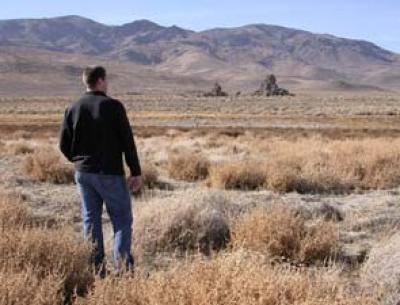Climate change models could have a thing or two to learn from termites and fungi, according to a new study released this week.
For a long time scientists have believed that temperature is the dominant factor in determining the rate of wood decomposition worldwide. Decomposition matters because the speed at which woody material are broken down strongly influences the retention of carbon in forest ecosystems and can help to offset the loss of carbon to the atmosphere from other sources. That makes the decomposition rate a key factor in detecting potential changes to the climate.
But scientists from Yale, the University of Central Florida and SUNY Buffalo State found that fungi and termites, which help break down wood, may play a more significant role in the rate of decomposition than temperature alone.
The group's findings appear in this week's edition of the journal Nature Climate Change.
"The big surprise of this work was the realization that the impact of organisms surpassed climate as a control of decomposition across spatial scales," said Joshua King, a biologist at UCF and co-author of the paper. "Understanding the ecology and biology of fungi and termites is a key to understanding how the rate of decomposition will vary from place to place."
So how did scientists originally come up with temperature as the main factor in decomposition? It has to do with data and math. Scientists most often construct a model based on the average decomposition rates of sites that are in close proximity to each other. In this case, it appears that each local number matter because they reflect the activity of fungi and termites. The team suggests that scientists need to embrace the variability found across data collected from many different sites instead of averaging it all together to create better models with more accurate predictions.

UCF biologist Joshua King is an expert on termites and ants.
(Photo Credit: UCF)
The team reached this conclusion after running a 13-month experiment. They distributed 160 blocks of pine tree wood across five sub-regions of temperate forest in the eastern U.S. — from Connecticut to northern Florida — and then monitored the decay that occurred.
They selected similar forest types, hardwood deciduous forests, to focus on major differences in climate across the regional gradient. (The average annual temperature in southern New England is about 11 degrees Celsius cooler than Florida.) Within each of the five sub-regions they placed the wood blocks in different types of terrain to evaluate the effects of local versus regional factors as controls on decomposition.
"Most people would try to make sure everything was as standard as possible," said Mark A. Bradford, an assistant professor of terrestrial ecosystem ecology at the Yale School of Forestry & Environmental Studies (F&ES) and lead author of the study. "We said, 'Well, let's generate as much variation as possible.' So we put some blocks on south-facing slopes, where they would be warmer in the summer, and others on north-facing slopes where it's colder. We put some on top of ridges and others next to streams where it was wetter."
After 13 months, they measured how much wood had been lost, whether to the consumption of fungi growing on the wood or to termites consuming the wood.
According to their analysis, local-scale factors explained about three quarters of the variation in wood decomposition, while climate explained only about one quarter, contrary to the expectation that climate should be the predominant control.
"We're reaching the wrong conclusion about the major controls on decomposition because of the way we've traditionally collected and looked at our data," Bradford said. "That in turn will weaken the effectiveness of climate prediction."
The team's recommendation: collect more data at local sites and improve our understanding of how local conditions affect the organisms that drive decomposition, because they could significantly improve the effectiveness of climate change projections.
Source: University of Central Florida